Unique food trails: Ming Tan sniffs out Mongolia's meat markets
Advertisement
Experiences
Unique food trails: Ming Tan sniffs out Mongolia's meat markets
While in the Mongolian uppercase for business, Chef Ming Tan of Jam at Siri House got more than what he signed up for.
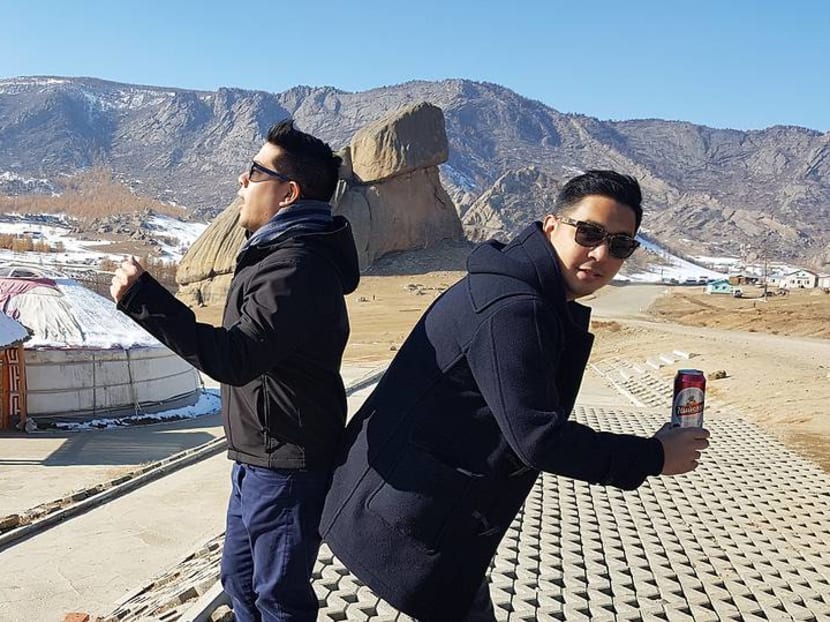
Ming Tan and his best friend Justin Grub went to Mongolia to examination a burger pop-upward make. (Photos: Ming Tan)
09 April 2022 06:30AM (Updated: 04 Jul 2022 03:58PM)
When Ming Tan and his best friend Justin Chow went to Ulaanbaatar in October 2022 to exam-run a burger pop-upwards make in a urban center cafe and melt a high-end private meal for a client, they wondered, at times, if they had bitten off more than they could chew.
Tan, who is currently the executive chef of Jam at Siri House, and Chow, chief marketing officer of digital healthcare provider Whitecoat Gobal and co-founder of individual investment platform Fundnel, had to sympathise the Mongolian F&B supply chain, visit markets for produce, and source ingredients through various fixers – and it was their offset visit to the land.
Fortunately, the duo was well taken care of by their clients, who hosted them for meals and brought them to well-known restaurants, hidden spaces and tardily night karaoke joints.

Amidst them was Hana Sushi at Monnis Tower, the private restaurant of a Mongolian tycoon that was helmed past a Tokyo chef and served "high quality Japanese nutrient, amazing fish and great tasting sushi rice".
Pop Rosewood Kitchen + Enoteca lived upwards to its highly-ranked reputation on Tripadvisor with its hearty European dishes made mostly from scratch from skillful quality local ingredients. Information technology also ran a grocery shop selling freshly baked bagels and all kinds of local meat.
READ> Keong Saik's latest dining destination: Pasta, craft beers and an elBulli chef
And at what Tan regards every bit "probably the best South Asian eating place in Ulaanbaatar", the always-crowded Namaste scored full marks for its freshly cooked naan and hot curries at authentic spice levels.
But the one item that stole Tan'southward stomach was the ubiquitous Mongolian dumpling khuushuur – deep-fried back-scratch puffs stuffed with chives and spiced pork, lamb or beef – that was found in every bar, restaurant, and store that Tan and Chow visited.
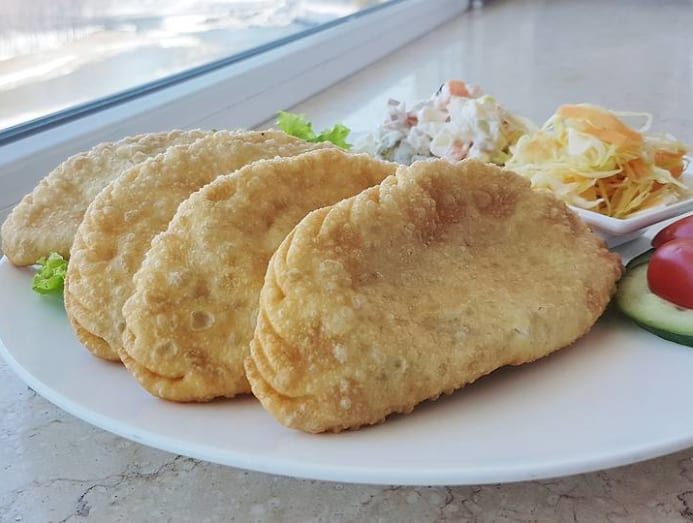
Tan says, "Some were small, similar the size of an egg, and others about the dimension of a modern smartphone. Whether I was cold, drunk, hungry or full, awake or half-comatose, every khuushuur I consumed was offered with a smile, served piping hot and tasted damn delicious. In my heed it is the best representation of a Mongolian dish."
Ironically it was the work part that supplied all the fun. One of their liaisons in Ulaanbaatar was heavily tattooed and pierced Chef Mars, who, together with their driver Tumurr, a large eye-anile homo with broad shoulders, huge hands and a beer belly, took the pair to various places to purchase their goods.
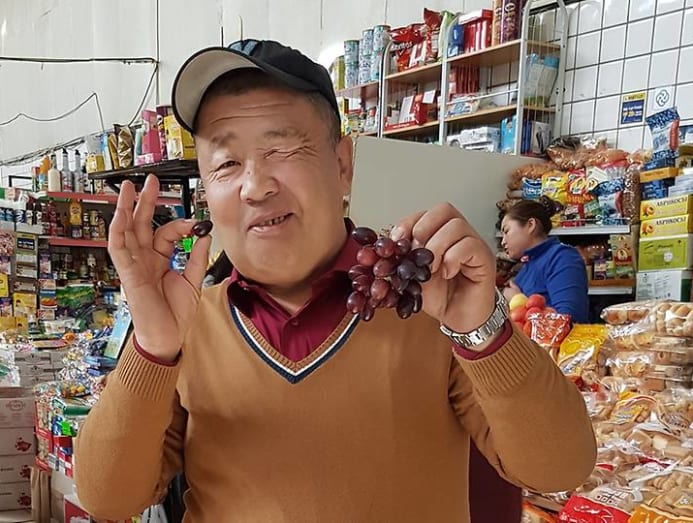
In ane nondescript warehouse filled with Japanese and Korean products, Tan found himself confounded by butter, milk, cheese, and cured meats wrapped in packaging covered in Cyrillic script. He said with amusement, "It was a goldmine for the curious foodie or chef, merely hell for someone trying to cook with these ingredients."
In some other warehouse advert "imported foreign goods", boxes of pasta and cereal were stacked perilously loftier next to jars of pickles, jams, and anchovies, while faux caviar in glass jars sit beside local cheeses bobbing in murky whey.
"The hall lacked the squawk and chortle of a busy hub of commutation," recalled Tan. "I could just equally easily exist ownership ammunition and Kevlar kneepads as I am looking for mayonnaise here."
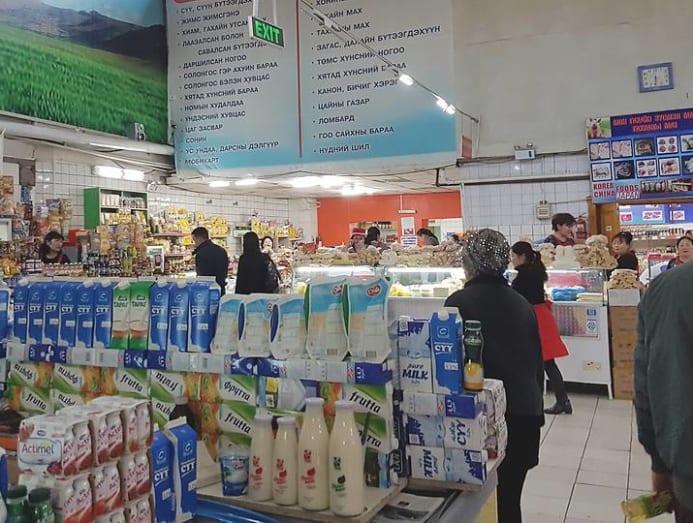
Topping the weird and wonderful list was Huchit Shonhor wholesale meat marketplace, a popular place that was somehow constantly referred by Tan'south fixers equally a "black market". He later found out that not all the meat in the market was institutionally inspected; a good one-half was sold via trading with nomadic herders with the meat slaughtered at an abattoir only backside the market.
The cluster of squarish single-storey buildings was located away from the urban center centre, and each edifice housed around xx meat sellers, each manning open up nutrient chillers displaying various cuts of beef, lamb and camel, with some camel tomahawk steak cuts as large as a small adult.

Tan found the place surprisingly clean. Nothing was wet due to the ambient temperature of 1 degree Celsius. "At that place was no signs of rot, no whiff of funk. Just a constant, very noticeable meatiness coupled with the smell of cattle, like a very buttery-smelling zoo."
The vendors, mostly stern-looking women dressed in uniforms with matching Mos Burger-style caps, presided over their chillers, which had cards with prices scrawled on them. One yelled at Tan when he took ane photograph too many. "I take only felt like shame bumping into fishmongers in Tsukiji and touching lobsters without permission in Noryangjin."
What was even more astonishing was the price. Well marbled, plump and boneless shortrib slabs were retailing for under S$three a kilo and cipher was "dripping or flabby except from the beefiness fur that needs to be removed prior to cooking".
READ> The silky deliciousness of fresh pasta – and where to become your fix in Singapore
With autumn temperatures hovering at zero degrees Celsius all mean solar day, everything was packed swiftly, without wrapping, into plastic bags. Every customer was shouldering a carcass of some kind, be it an entire lamb or the legs of a cow. Tan even saw someone nonchalantly throw a lamb carcass into the kicking of a big BMW X5 before driving abroad.
"Nosotros paid what seems to be a ridiculously depression corporeality for whole primal cuts of beefiness to grind for our burgers," said Tan. "The patties nosotros made from them were phenomenally tasty, with a rounded beefiness that I still remember clear as mean solar day."
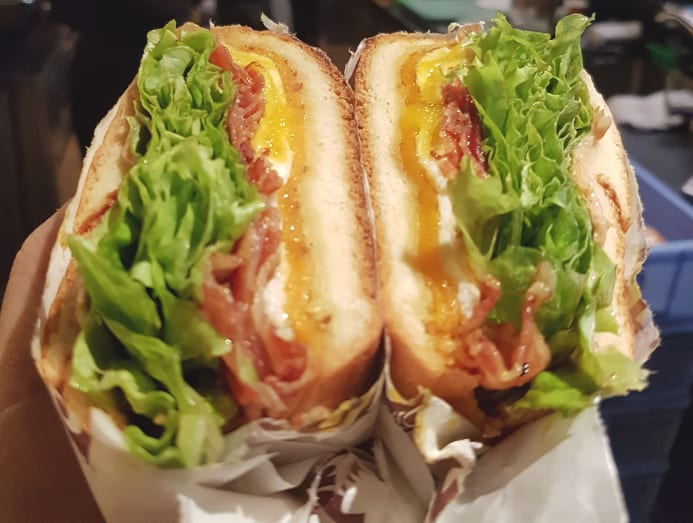
All these local interactions precisely brand up what Tan feels nutrient should be about: people.
He said, "A memorable nutrient journey should include experiences of how locals buy, cook and eat their food. I love visiting places nearly food markets, where you lot can often discover a thriving economy of kitchenware shops, and I get fascinated learning how food is grown and gets into someone's mouth."
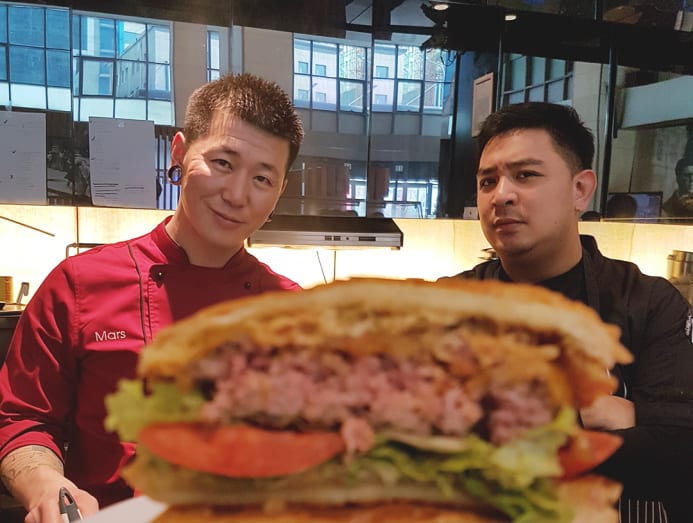
Source: https://cnalifestyle.channelnewsasia.com/experiences/chef-ming-tan-jam-at-siri-house-mongolia-burger-pop-up-239331
0 Response to "Unique food trails: Ming Tan sniffs out Mongolia's meat markets"
Post a Comment